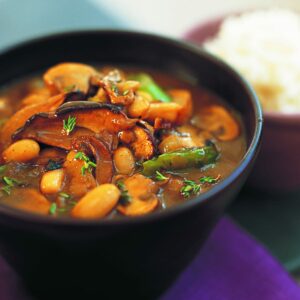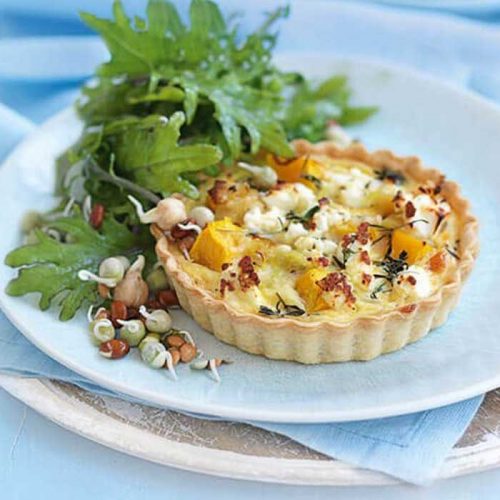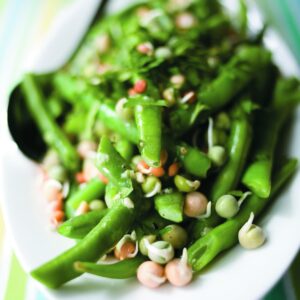
Plastic waste has been on the increase during the COVID-19 pandemic but the need for reducing it hasn’t gone away. Food and health writer Niki Bezzant looks at 10 easy ways you can get back into using less plastic.
A global pandemic is a great way to get everything else out of the news. For months now, around the world, we haven’t heard about much else beyond COVID-19. The virus has, of course, dominated our lives.
It’s also changed the way we do most everyday things. The way we move around (if we’re allowed to); and the way we shop, eat and interact. And that’s meant some other things we might have prioritised pre-COVID have taken a back seat. Among those might be sustainability and the things we try to do to live in a more environmentally-friendly way.
The use of plastic is an important example. The Wall St Journal recently reported “Single-use plastic is back in the pandemic era”. The Economist says consumption of single-use plastic may have grown by 250-300 per cent in the US since the coronavirus outbreak began. In Singapore, during an eight-week lockdown, 5.7 million residents generated an additional 1470 tons of plastic waste from takeout packaging and food delivery alone, according to one survey. The coronavirus pandemic has prompted a plastic waste pandemic, as well.
While it’s likely we did have to compromise and use more single-use plastic items for safety reasons during lockdown, as restrictions ease, how can we get safely back into a low-plastic or no-plastic life?
Plastic-Free July is well timed to help us kick start this process. The global movement is encouraging us to cut our plastic use for the benefit of our streets, oceans and communities now and in the future. Here are some ways to ease your way back into a low-plastic life.
1. Ditch the straws
Yes, it’s easier to drink when wearing a mask if you use a straw. Invest in a re-usable straw you can wash at home, and bring it with you if you’re out and about. Wash thoroughly at home and keep it in your bag.
2. BYO cutlery
Some food outlets have switched to disposable plastic cutlery as a way to give customers a feeling of safety and hygiene. You can avoid contributing to this waste plastic mountain – and stay safe – by bringing your own fork, knife, spoon or chopsticks in a sealed bag or container.
3. Use bar soap
Hand washing is crucial, but all that hand wash means more plastic containers. Switching to bar soap solves that – and it’s just as effective as liquid soap. It lasts longer, too, saving you money.
4. Switch your shampoo
The same goes for shampoo and body wash. Bar versions of these are widely available, last for ages and mean a plastic-free shower!
5. Try a keep cup
Some cafes have banned BYO takeaway coffee cups in the pandemic, for fear of contamination. But there are ways these can be used, so seek out cafes that have got this down. The protocol: the customer puts their own cup on counter. The Barista espresses coffee into a jug and tips into cup, then adds the milk. Customer picks up (the barista doesn’t touch the cup at any point). The counter is then sanitised.
If that’s not possible, and it’s allowed where you live, take a moment and have your coffee in-cafe.
6. Have one less takeout
Takeout meals are often served in plastic containers, and a week’s worth of these can pile up in a quite alarming way. Choosing to have one less meal delivered or taken out, and cooking at home instead, will reduce your plastic output. It’s also worth seeking out and supporting places that choose to use recyclable card or truly compostable packaging.
7. Pick your packaging
When you’re shopping for food and groceries, keep an eye out for products in non-plastic packaging. Or, if that’s not an option, go for the least packaging possible. That might mean buying in bulk, choosing loose produce rather than packaged, or seeking out glass-bottled drinks and liquids rather than plastic containers.
8. Can the cartons
Cartons used for consumables, such as milk, juice and soup, are made with a combination of cardboard, plastic and foil, which is incredibly difficult to recycle. Plastic-free July says there are usually glass-bottle alternatives to cartons of milk, stock, juices and flavoured milk or, if you’ve got time on your hands, you might like to have a go at making your own stock, juice and even nut milk. Choosing tap water over juice is a great step for your health, too.
9. Declare a wrap-free kitchen
If there’s one thing to challenge yourself to give up in July, it’s plastic cling wrap. Once you get the hang of using alternatives, you won’t miss this single-use plastic in your kitchen. Experiment with beeswax wraps; re-usable ‘hat’ style washable food covers; re-usable silicon or rubber lids and re-sealable containers and jars.
10. Bags (and masks) on board
You might be out of the habit of taking your own shopping bags when you shop. But if restrictions are easing where you live, get your bags back on board. Make them single-use by popping them into the wash after each use – to keep them clean and safe. The same goes for re-usable masks; go for fabric ones you can wash and re-use, rather than plastic-containing disposables.
www.healthyfood.com










